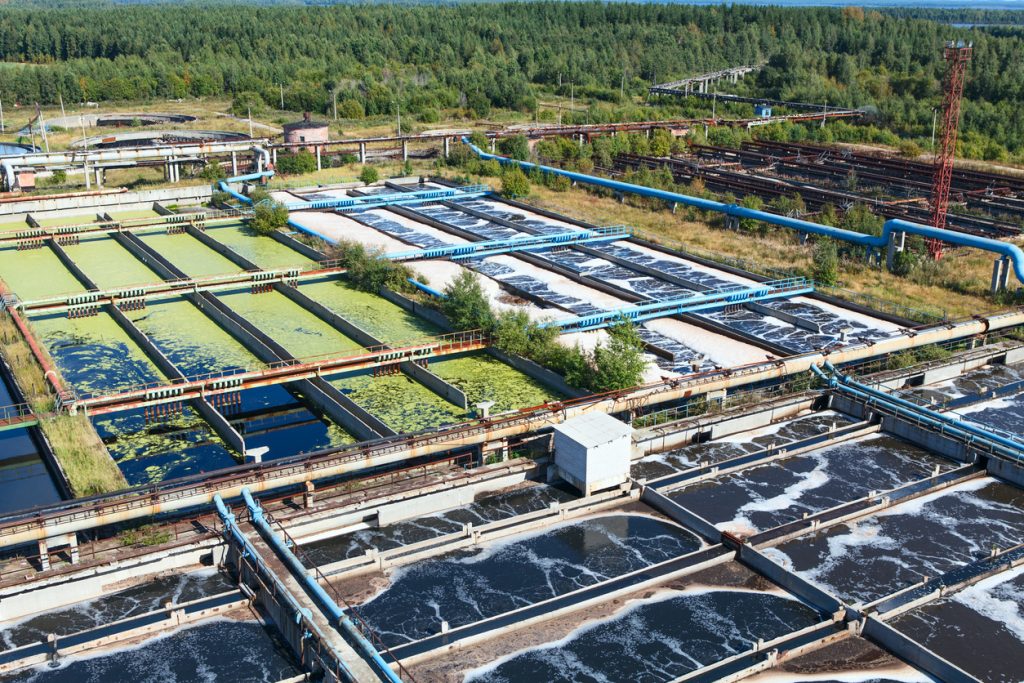Strategic Approaches to Enhance Waste Water Therapy Efficiency and Reduce Ecological Influence
In the realm of waste water therapy, the pursuit for boosted efficiency and decreased ecological influence is a continuous challenge that demands tactical options. As culture faces the vital to take care of water sources sustainably, a nuanced strategy becomes vital. The assimilation of innovative therapy modern technologies, energy-efficient procedures, source recovery methods, boosted nutrient removal methods, and clever surveillance and control systems represents a complex structure for dealing with these pushing concerns. What exists at the core of this facility internet of techniques is the potential to change the method we approach waste water treatment, not simply as a procedure of disposal, however as a useful opportunity for innovation and environmental stewardship.
Advanced Treatment Technologies
Innovative membrane layer purification systems have reinvented innovative wastewater therapy procedures, substantially improving the removal of impurities. This technology has proven to be very reliable in eliminating a vast variety of contaminants, including pharmaceuticals, hefty metals, and natural substances, which are commonly testing to eliminate through standard treatment methods.
Moreover, membrane layer filtering systems supply countless advantages over traditional therapy approaches. Additionally, these systems are extremely versatile and can be easily integrated into existing treatment plants or used as standalone systems for decentralized applications.
Energy-Efficient Processes
The integration of energy-efficient procedures in wastewater therapy systems is critical for enhancing source use and lowering operational expenses. By carrying out energy-efficient innovations, therapy plants can dramatically reduce their carbon impact and overall environmental effect. One crucial approach to boosting power effectiveness in wastewater treatment is the utilization of advanced oygenation systems, such as great bubble diffusers or surface aerators, which can boost oxygen transfer efficiency and minimize energy consumption. Additionally, integrating energy recovery systems, like anaerobic food digestion for biogas manufacturing or making use of excess warm for thermal processes, can help balance out energy requirements and advertise sustainability.
In addition, optimizing procedure control and automation via making use of advanced sensors and keeping an eye on systems can boost overall energy efficiency by adjusting procedures in real-time based upon real demand and conditions. Carrying out power audits and regularly keeping an eye on power efficiency indications are crucial techniques to recognize locations for renovation and track energy-saving efforts successfully. Generally, the fostering of energy-efficient processes in wastewater treatment not only benefits the environment yet also adds to long-term expense financial savings and operational sustainability.
Resource Recovery Techniques
With an emphasis on optimizing resource usage and sustainability in wastewater treatment systems, the application of source recuperation strategies emerges as an essential facet in enhancing operational effectiveness. Source recovery approaches in wastewater therapy involve the recognition and extraction of important resources from the waste stream, thus transforming what was when considered waste into a valuable property. By executing source healing techniques such as nutrient elimination and recovery, power generation from raw material, and the manufacturing of recyclable water, wastewater treatment plants can decrease ecological effect while maximizing performance.

Improved Nutrient Removal Strategies
Implementing advanced nutrient elimination methods is vital for enhancing the efficiency of wastewater treatment systems. Enhanced nutrient elimination plays a critical duty in lessening the environmental influence of cured effluent discharged right into water bodies. Among the essential strategies made use of for improved nutrient elimination is the procedure of biological nutrient elimination (BNR), which entails the elimination of nitrogen and phosphorus through organic processes. This can be attained with the usage of specialized microbes that can convert nitrogen substances into inert nitrogen gas through denitrification, and collect phosphorus within their cells with a process called enhanced organic phosphorus removal (EBPR)

In addition to BNR, advanced treatment techniques such as membrane layer bioreactors (MBRs) and built marshes can likewise be employed to boost nutrient elimination performance. By including these innovative nutrient elimination methods into wastewater treatment districts, systems and sectors can successfully minimize nutrient contamination and protect the environment.
Smart Surveillance and Control Systems
Making use of sophisticated technology, the assimilation of wise monitoring and control systems changes the functional effectiveness of wastewater treatment centers. These systems integrate advanced sensing units and information analytics to continuously check crucial parameters such as pH degrees, turbidity, dissolved oxygen, and flow prices in real-time. By gathering and evaluating this information, operators can get click to read valuable understandings right into the performance of the therapy processes, making it possible for positive adjustments to optimize therapy effectiveness.
Smart surveillance and control systems additionally sustain remote tracking capabilities, enabling drivers to gain access to real-time data and control features from off-site locations. This remote access enhances functional adaptability and responsiveness, allowing swift treatments in case of system malfunctions or variations in influent high quality. In addition, the predictive upkeep capabilities of these systems assist prevent devices failures and lessen downtime, ultimately improving the overall dependability of wastewater therapy operations (Waste Water Treatment).
Verdict
Finally, strategic methods such as sophisticated therapy modern technologies, energy-efficient procedures, resource recuperation approaches, enhanced nutrient removal methods, and clever monitoring and control systems play an essential function in improving wastewater therapy performance and reducing environmental impact. By applying these techniques, wastewater treatment plants can enhance their general performance, lower power intake, recoup useful sources, and make sure compliance with environmental regulations. These strategies are essential for sustainable and efficient wastewater monitoring techniques.

In verdict, tactical approaches such as innovative therapy modern technologies, energy-efficient processes, resource recovery strategies, enhanced nutrient removal techniques, and smart surveillance and control systems play an essential function in enhancing wastewater treatment performance and minimizing ecological impact.